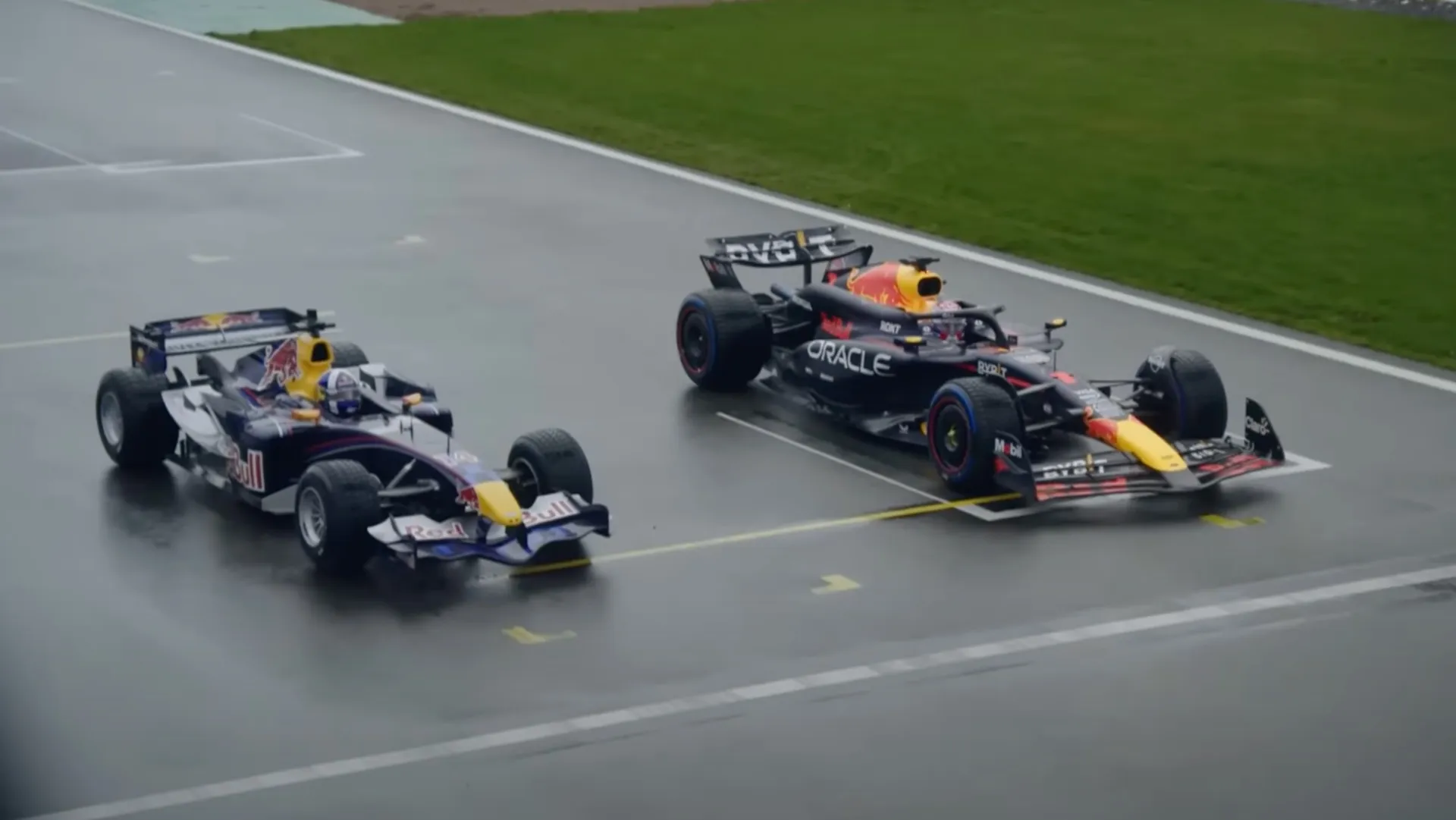Making a race car bigger and heavier may seem counterproductive, but that’s exactly what’s happened to Formula 1 cars over the past two decades.
Red Bull Racing recently brought out its first F1 car—the RB1 from the 2005 season—for a comparison with the current RB20 at a very wet Silverstone circuit. David Coulthard, who raced the RB1 during Red Bull’s inaugural season, got reacquainted with the car while reigning F1 champion Max Verstappen (who was eight years old when the RB1 made its debut) drove the RB20.
F1 has gone through several rule changes since Red Bull entered the sport at the turn of the century with its purchase of the troubled Jaguar team from Ford. That’s immediately apparent upon seeing the RB1 and RB20 together. The 2024 car is over 3.2 feet longer than the 2005 car, roughly a foot wider, and about 440 pounds heavier.
The extra weight is due in part to the current hybrid power unit, whose first interation was introduced in 2014. The 2005 cars used simpler naturally aspirated 3.0-liter V-10 engines without any electrification. Known for their incredible sound, the V-10s were replaced by 2.4-liter V-8s for 2006, with kinetic energy recovery systems (KERS) later adding a degree of electrification before introduction of the full-fat hybrid powertrains.
A major rule change for the 2017 season mandated longer and wider cars with much wider tires. The changes were aimed at increasing downforce, which did result in much quicker lap times. Aerodynamics were greatly simplified with the latest car-design overhaul for the 2022 season, which focused more on ground-effect downforce generated by the floor than topside aero appendages. But it didn’t do anything to shrink the cars.
The next big rule change is scheduled for 2026 and focuses on the power units. The current turbocharged 1.6-liter V-6 internal-combustion format will remain, but the new power unit will be simpler thanks to the elimination of the MGU-H, the electric motor-generator that recovers energy from the exhaust via the turbocharger. The MGU-K, which recovers energy through regenerative braking will remain and contribute more electrical power. F1 expects peak system output of more than 1,000 hp—but with lower fuel consumption than the current cars.
